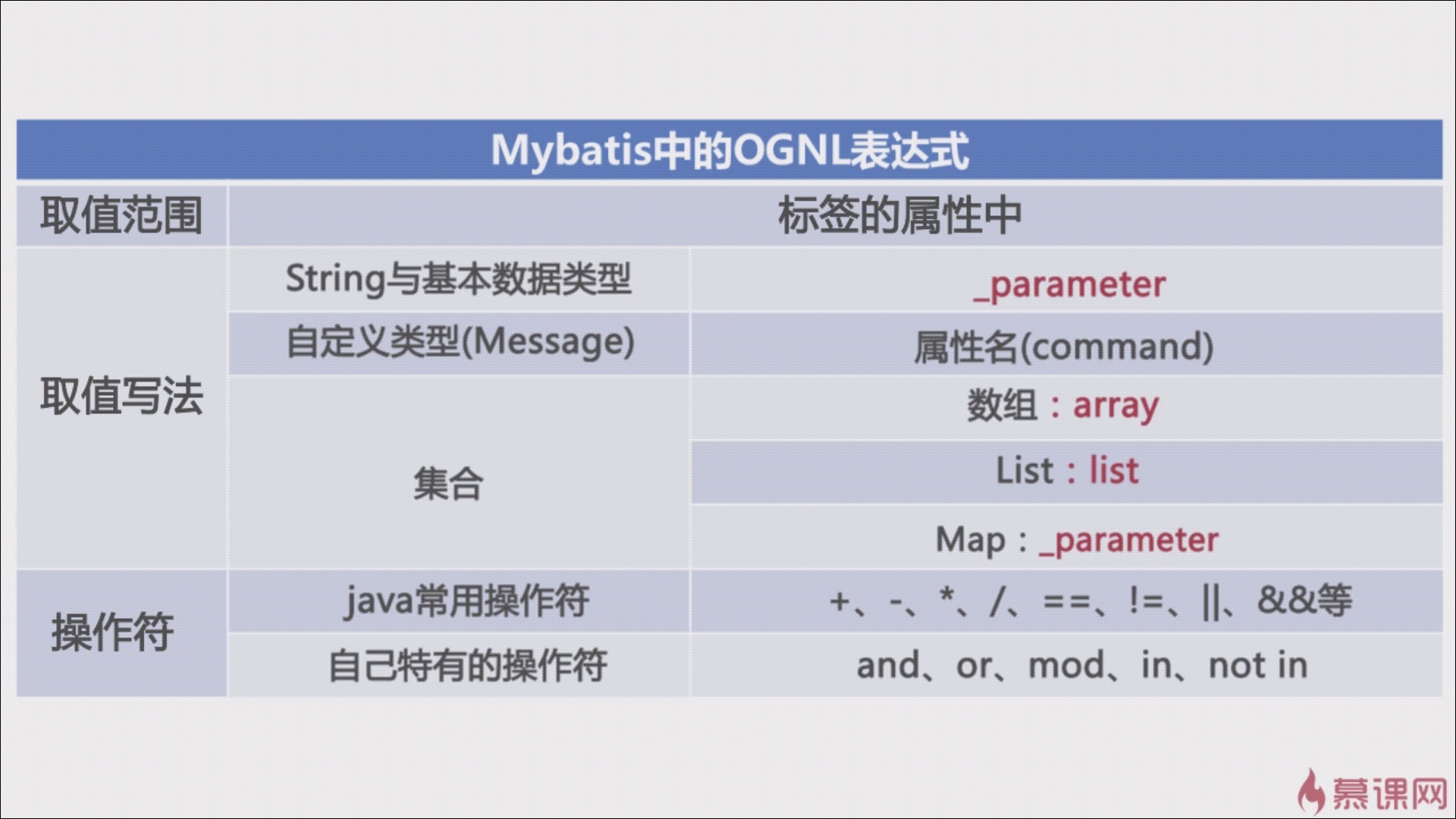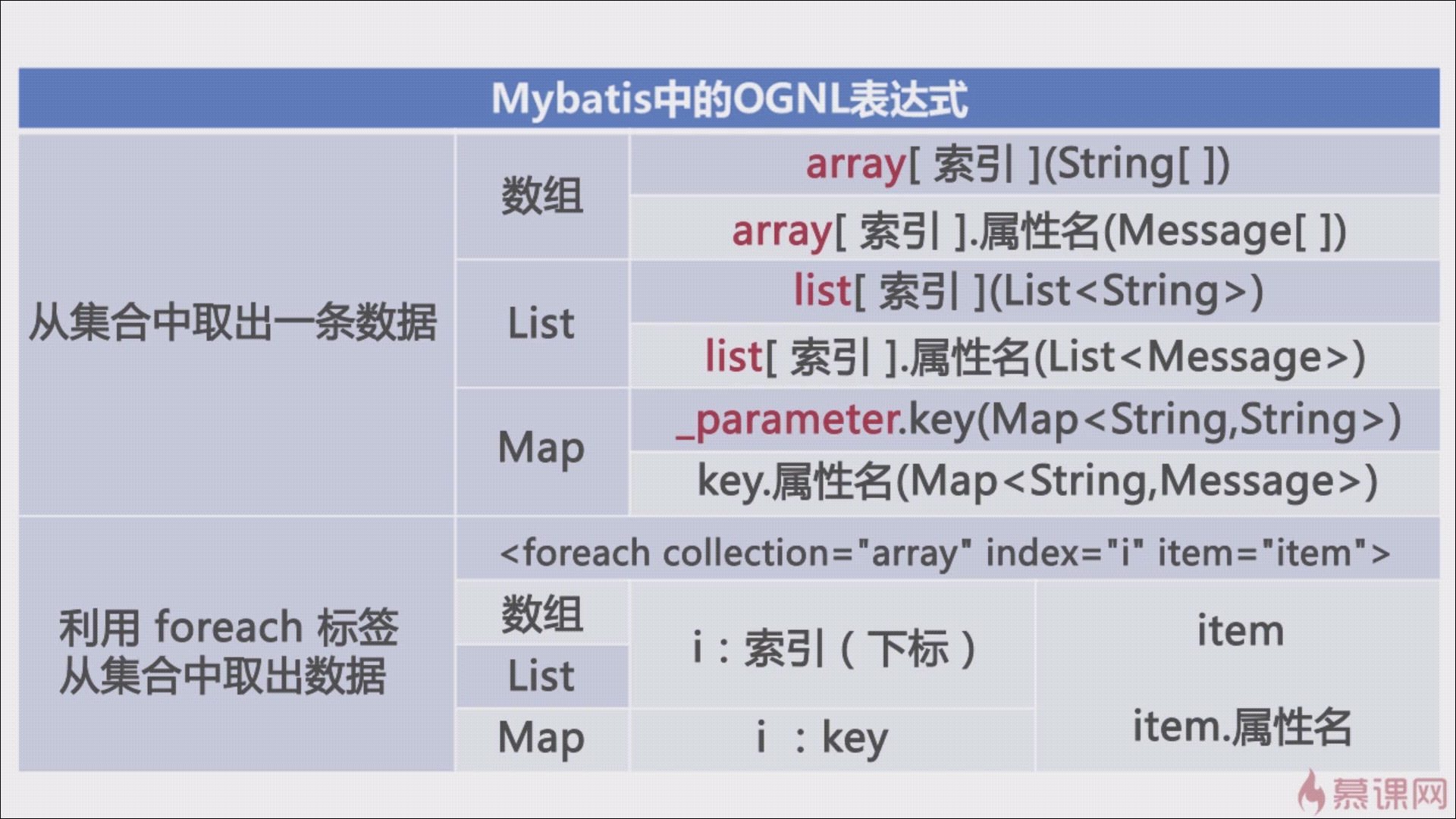2017.4.19 慕課網-通過自動回覆機器人學習mybatis
開發前的分析
1.技能前提
JSP JSTL EL JS/JQUERY
Servlet JavaBean
JDBC(後期再用mybatis,這樣體會更深) MYSQL
2.需求分析和模組劃分
(1)基本功能
1 接收發送指令 2 根據指令自動回覆對應的功能
(2)模組劃分
1 回覆內容維護 2 回覆內容列表3 對話功能 4 回覆內容刪除
開發:JSP+Servlet+JDBC
new -> web project -> 輸入project name為MicroMessage
step1:確認程式能跑起來
(1)ListServlet
1 package com.imooc.servlet;2 3 /** 4 * 列表頁面初始化控制 5 */ 6 public class ListServlet extends httpServlet { 7 @Override 8 protected void doGet(HttpServletRequest req, HttpServletResponse resp) 9 throws ServletException, IOExcepiton{ 10 req.getRequestDispatcher("/WEB-INF/jsp/back/list.jsp").forward(req,resp);11 } 12 13 @Override 14 protected void doPost(HttpServletRequest req, HttpServletResponse resp) 15 throws ServletException, IOExcepiton{ 16 this.doGet(req,resp); 17 } 18 }
(2)web.xml中加入servlet的配置
1 <servlet> 2 <servlet-name>ListServlet</servlet-name> 3 <servllet-class>com.imooc.Servlet.ListServlet</servlet-class> 4 </servlet> 5 <servlet-mapping> 6 <servlet-name>ListServlet</servlet-name> 7 <url-pattern>/List.action</url-pattern> 8 </servlet-mapping>
(3)/WEB-INF/jsp/back/list.jsp
注意jsp檔案放在WEB-INF下,這樣必須經過後臺才能訪問到jsp。
如果放在WebRoot下(和WEB-INF平級)是能夠被直接訪問到的,除非設定了jsp攔截。
另外,關於jsp中如何使用專案的根目錄:
1 <%
2 String path = request.getContextPath();
3 Sring basePath = request.getScheme()+"://"+request.getServiceName+":"+request.getServicePort()+path+"/"
4 %>
(4)/WebRoot/resources/css|images
在jsp檔案中引用css:
1 <head> 2 <meta .../> 3 <title ../> 4 <link href="<%= basePath =%>css/all.css" rel="stylesheet" type="text/css"/> 5 </head>
(5)執行程式碼
訪問路徑:localhost:8080/MicroMessage/List.action 。可以成功顯示靜態頁面。
step2:從資料庫中取資料
(1)建表
1 資料庫名:micro_message。 2 表名:message 3 賬號:root 4 密碼:root
(2)建立JavaBean
1 package com.imooc.bean; 2 3 /** 4 *與訊息表對應的實體類 5 */ 6 public class Message{ 7 private String id; 8 private String command; 9 private String description; 10 private String content; 11 //getter和setter略。 12 }
(3)Servlet中增加讀取資料的程式碼
1 package com.imooc.servlet; 2 3 /** 4 * 列表頁面初始化控制 5 */ 6 public class ListServlet extends httpServlet { 7 @Override 8 protected void doGet(HttpServletRequest req, HttpServletResponse resp) 9 throws ServletException, IOExcepiton{ 10 try{ 11 Class.forName("com.mysql.jdbc.Driver"); 12 Connection conn = DriverManager.getConnection("jdbc:mysql://127.0.0.1:3306/micro_message","root","root"); 13 String sql = "select ID,COMMAND,DESCRIPTION,CONTENT from MESSAGE"; //這裡不要寫select * 14 PreparedStatement statement = conn.prepareStatement(sql);16 ResultSet rs = statement.executeQuery(); 17 List<Message> messageList = new ArrayList<Message>(); 18 while(rs.next()){ 19 Message message = new Message(); 20 messageList.add(message); 21 message.setId(rs.getString("ID")); 22 message.setCommand(rs.getString("COMMAND")); 23 message.setDescription(rs.getString("DESCRIPTION")); 24 message.setContent(rs.getString("CONTENT")); 25 } 26 req.setAttribute("messageList",messageList); 27 }catch(ClassNotFoundException e){ 28 e.printStackTrace(); 29 }catch(SQLException e){ 30 e.printStackTrace(); 31 } 32 req.getRequestDispatcher(“/WEB-INF/jsp/back/list.jsp”).forward(req,resp); 33 } 34 35 @Override 36 protected void doPost(HttpServletRequest req, HttpServletResponse resp) 37 throws ServletException, IOExcepiton{ 38 this.doGet(req,resp); 39 } 40 }
(4)list.jsp中獲取值
這裡用到了jstl(c:forEach,c:if),所以要加上庫:<%@ taglib prefix=“c” uri=“http://java.sun.com/jsp/jstl/core” %>。其中的uri可以從/META-INF/c.tld中複製。c.tld有一個<uri>標籤,值就是http://java.sun.com/jsp/jstl/core。
另外,這裡還加上了偶數行有背景色的效果。因為status從0開始,所以實際上是表格的基數行。
1 <%@ taglib prefix=“c” uri=“http://java.sun.com/jsp/jstl/core”%> 2 <c:forEach items=“${messageList}” var=“message” varStatus=“status”> 3 4 <tr <c:if test=“${status.index%2!=0}”> style='background-color:#ECF6EE;’ </c:if> > 5 > 6 <td><input type=“checkbox”/></td> 7 <td>${status.index+1}</td> 8 <td>${message.command}</td> 9 <td>${message.description}</td> 10 <td> 11 <a href=‘#’>修改</a> 12 <a href=‘#’>刪除</a> 13 </td> 14 </tr> 15 </c:forEach>
(5)執行
重啟專案(注意Servlet的生命週期,只例項化一次,所以必須要重啟才能生效。但是debug模式下eclipse會為servlet重新載入)訪問地址***,可以看到查出來的資料,和背景色效果。
step3:加查詢條件command和description
(1)在jsp中新增action,併為查詢框的input命名
1 <form action="<%= basePath =%>List.action" id="mainForm" method="post"> 2 ... 3 <td> 4 <input name="command" type="text" class="allInput" value=""/> 5 </td> 6 <td> 7 <input name="description" type="text" class="allInput" value=""/> 8 </td> 9 .. 10 </form>
(2)ListServlet中處理查詢引數
2 req.setCharacterEncoding(“UTF-8"); //不加這句的話,在查詢框裡輸入中文,下面getParameter得到的值會是亂碼 3 String command = req.getParameter("command");//和jsp中查詢框input的name匹配 4 String description = req.getParameter("description");
4 try{ 5 Class.forName("com.mysql.jdbc.Driver"); 6 Connection conn = DriverManager.getConnection("jdbc:mysql://127.0.0.1:3306/micro_message","root","root"); 7 StringBuilder sql = new StringBuilder(“select ID,COMMAND,DESCRIPTION,CONTENT from MESSAGE where 1==1"); 8 List<String> paramList = new ArrayList<String>(); 9 if(command != null && !"".equals(command.trim())){ 10 sql.append(" and COMMAND=?"); //注意這裡有個空格,否則拼接完成後有語法錯誤。 11 } 12 if(description != null && !"".equals(description.trim())){ 13 sql.append(“ and DESCRIPTION like '%'?'%'”);//mysql的模糊查詢格式 14 } 15 PreparedStatement statement = conn.prepareStatement(sql.toString()); 16 for(int i=0; i<paramList.size();i++){ 17 statement.setString(i+1,paramList.get(i)); //sql中?的位置從1開始 18 } 19 statement.executeQuery();
20 ...
21 }
(3)讓查詢框中的引數保留
前面執行後,可以發現,當在查詢框中輸入值進行查詢後,查詢框中的值會消失。是因為這裡的value為""。
1 <input name="description" type="text" class="allInput" value=""/>
首先要將引數的值儲存在req中,這樣jsp中才能拿到值。
1 req.setCharacterEncoding(“UTF-8"); 2 String command = req.getParameter(“command”); 3 String description = req.getParameter(description); 4 5 req.setAttribute("command",command); 6 req.setAttribute("description", description); 7 try{ 8 Class.forName(“com.mysql.jdbc.Driver”); 9 Connection conn = DriverManager.getConnection(“jdbc:mysql://127.0.0.1:3306/micro_message”,”root”,”root”);
10 ...
11 }
然後將jsp中input的value設定為req中的屬性值。
1 <input name="description" type="text" class="allInput" value="${description}"/>
重構:在進行下一步開發前整理程式碼
可以看到前面的程式碼,註釋少,內容都放在一個方法裡。所以需要對程式碼進行重構。根據功能進行層次劃分。
step1:dao層
1 package com.immoc.dao; 2 /** 3 *和message表相關的資料庫操作 4 */ 5 public class MessageDao{ 6 public List<Message> queryMessageList(String command,String description){ 7 List<Message> messageList = new ArrayList<Message>(); 8 try{ 9 Class.forName("com.mysql.jdbc.Driver");
10 ...
11 while(){...} 23 }catch(ClassNotFoundException e){ 24 e.printStackTrace(); 25 }catch(SQLException e){ 26 e.printStackTrace(); 27 } 28 return meesageList;
29 } 29 }
step2:service層
1 package com.immoc.service 2 /** 3 *列表相關的業務功能 4 */ 5 public class ListService{ 6 public List<Message> queryMessageList(String command, String description){ 7 MessageDao messageDao = new MessageDao(); 8 return messageDao.queryMessageList(command,description); 9 } 10 }
step3: Servlet
1 package com.imooc.servlet; 2 3 /** 4 * 列表頁面初始化控制 5 */ 6 public class ListServlet extends httpServlet { 7 @Override 8 protected void doGet(HttpServletRequest req, HttpServletResponse resp) 9 throws ServletException, IOExcepiton{
10 //接受頁面的值 10 req.setCharacterEncoding("UTF-8"); 11 String command = req.getParameter("command"); 12 String description = req.getParameter("description”); 13 //向頁面傳值 14 req.setAttribute("command",command); 15 req.setAttribute("description", description);
15 //查詢訊息列表並傳給頁面 16 ListService listService = new ListService(); 17 req.setAttribute("messageList”,listService.queryMessageList(command,description));
18 //向頁面跳轉 18 req.getRequestDispatcher(“/WEB-INF/jsp/back/list.jsp”).forward(req,resp); 19 } 20 ... 21 }
step4:執行測試。
mybatis
step1:下載mybatis
注意:mybatis-**-SNAPSHOT是正在開發的版本,不要下載使用。下載mybatis-**.zip後,也下載一下mybatis的source code。因為source code裡有一個test資料夾,裡面是一些演示程式碼,會有幫助。
下載完成後,將mybatis-**.jar放至專案的lib目錄下。
step2:mybatis的主配置檔案
從source code中拷貝檔案:src\test\java\org\apache\ibatis\submitted\complex_property\Configuration.xml 放到專案中。
1 <configuration> 2 <environments> 3 <environment> 4 <transactionManager type=“JDBC”> 5 <property name=“” value=“”/> 6 </transactionManager> 7 <dataSource type=“UNPOOLED”> 8 <property name=“driver” value=“com.mysql.jdbc.Driver”/> 9 <property name=“url” value=“adbc:mysql://127.0.0.1:3306/micro_message”/> 10 <property name=“username” value=“root”/> 11 <property name=“password” value=“root”/> 12 </dataSource> 13 </environment> 14 </enviroments> 15 ... 16 </configuration>
step3:讀取mybatis的配置檔案
1.幾個問題
Dao層的真實需求?
物件能與資料庫互動;能執行sql語句。
mybatis如何像dao層提供需求的?
通過SqlSession。
SqlSession的作用?
1 向SQL語句傳入引數 2 執行SQL語句 3 獲取執行SQL語句的結果 4 事務的控制
如何獲得SqlSession?
1 通過配置檔案獲取資料庫連線相關資訊 2 通過配置資訊構建SqlSessionFactory 3 通過SqlSessionFactory開啟資料庫會話(SqlSession就是一次與資料庫互動的會話)
2.db層(真正與資料庫互動的層)
1 package com.imooc.db; 2 3 /** 4 *訪問資料庫類 5 */ 6 public class DBAcess{ 7 public SqlSession getSqlSession() throws IOException{ 8 //通過配置檔案獲取資料庫連線資訊 9 Resources.getResourceAsReader(“com/imooc/config/Configuration.xml”);//src是根路徑 10 //通過配置資訊構建SqlSessionFactory 11 SqlSessionFactoryBuilder sqlSessionFactoryBuilder = SqlSessionFactoryBuilder().build(reader); 13 //通過SqlSessionFactory開啟一個數據庫會話 14 SqlSession sqlSession = SqlSessionFactory.openSession(); 15 return sqlSession; 16 } 17 }
3.增加mybatis的對映檔案
(1)在mybatis的主配置檔案里加載對映檔案Message.xml
1 <configuration> 2 ... 3 <mappers> 4 <!—-同樣從src下開始算起—-> 5 <mapper resource=“com/imooc/config/sqlxml/Message.xml”/> 6 </mappers> 7 </configuration>
(2)Message.xml

名稱空間:必須有,否則讀取配置檔案會報錯。
<select/update/delete id=" "> 中id的值在同一個namespace下同一個標籤下必須唯一。
<resultMap type="" id=""> 中:
type的值為對應的JavaBean,必須填寫全路徑或者定義的別名。id的值為<select/update/delete resultMap="">中resultMap的值,表明是與哪個sql語句相對應的resultMap。
<resultMap>的子標籤中:
<id column"">中填寫的是主鍵的欄位名。<result column="">填寫的是普通的列名。property中填寫的是JavaBean中屬性名。
(3)mybatis的OGNL
上面的<if test=""> </if>等是OGNL表示式。不是mybatis專有的。但是在mybatis裡有特性?(這句話不確定)
(ps:前面jsp檔案中的<c:if>是EL表示式。)


step4:修改dao層程式碼
1 public class MessageDao{ 2 public List<Messag> queryMessageList(String command,String description){ 3 List<Message> messageList = new ArrayList<Message>(); 4 DBAccess dbAccess = new DBAccess(); 5 SqlSession sqlSession = null; 6 try{ 7 sqlSession = dbAccess.getSqlSession(); 8 Message message = new Message(); 9 message.setCommand(command); 10 message.setDescription(description); 11 messageList = sqlSession.selectList(“Message.queryMessageList”,message); //Message.xml中的sql語句的namespase.id 12 }catch(IOException e){ 13 e.printStackTrace(); 14 }finally{ 15 if(sqlSession != null){ 16 sqlSession.close(); 17 } 18 }
19 return messageList; 19 }
